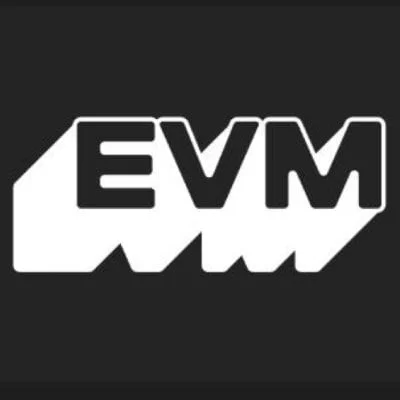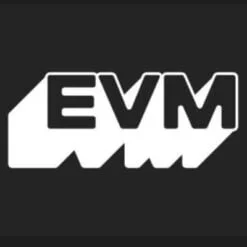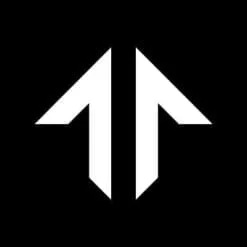Multi-Chain Bridgeless Infrastructure, Indexer, and Marketplace for Digital Artifacts (Inscriptions)
This proposal introduces a transformative approach to digital assets and NFTs, utilizing purely on-chain data storage, multi-chain interoperability, and an indexer system to make digital artifacts truly immutable and decentralized. Here’s a breakdown of the core concepts and components outlined in the document:

1. Introduction: Decentralization and Immutable Digital Artifacts
The core vision behind this proposal is to overcome the inherent limitations of trust-based NFT systems that rely on third-party servers for storage and validation. These centralized systems pose a risk to asset immutability and authenticity, which undermines the decentralization principles of blockchain technology.
- Digital Artifacts (Inscriptions): NFTs or digital assets that are purely on-chain, meaning that the entire data (including media files, transaction histories, and metadata) is stored directly on the blockchain itself, without relying on third-party intermediaries or centralized servers.
- The key benefit is immutability: once inscribed, the data cannot be altered, ensuring ownership proof and authenticity.
By leveraging purely on-chain storage, this system aims to allow digital assets to be cross-chain interoperable—without the need for oracles or bridges that usually parse and transfer data across blockchains. This enables more secure, decentralized, and multi-chain interactions for digital artifacts.

2. Digital Artifacts and Inscriptions
An inscription is essentially a data unit that is stored within a transaction on a blockchain, using a section known as IDM (Input Data Message) or callData. The data is immutable and on-chain, ensuring transparency and security.
- Inscriptions can include different types of data like images, videos, HTML, and token-related information.
- This on-chain approach contrasts with traditional NFTs, where metadata is often stored off-chain, in centralized storage, leading to potential issues with data permanence and authenticity.
For example, Bitcoin’s Ordinals protocol uses this inscription technique to store Bitcoin-native NFTs, enabling the creation of NFTs directly on Bitcoin without needing smart contracts (as seen on Ethereum). The system can also accommodate other chains and token standards like BRC-20, ERC-20, BEP-20, and others, which can help define asset behavior (minting, transferring, burning, etc.).
3. Indexer: The Backbone of the Ecosystem
An indexer is an essential component that reads, parses, and validates inscriptions on multiple chains. It serves as a decentralized data interpreter for the entire ecosystem. This enables a new level of cross-chain interaction by parsing and validating data across multiple blockchains without centralized control.
- Indexer’s Role: The indexer ensures that inscriptions across multiple blockchains are correctly validated and interpreted according to predefined standards (e.g., BRC-20, ERC-20, etc.).
- Cross-Chain Interoperability: The indexer allows data on one blockchain to reference data from another, supporting a decentralized way to validate inter-chain transactions without oracles or centralized systems.
- Dynamic Functions: The indexer can also execute complex functions like time-locked contracts, which require parsing of complex JSON instructions embedded in inscriptions.
This decentralized, cross-chain indexing could be the key to unlocking a truly bridgeless infrastructure, where blockchains can seamlessly communicate with each other, providing increased scalability, security, and interoperability.
4. Inscribed Token Standards
Inscriptions enable the creation of inscribed tokens, which follow specific token standards. These standards are still evolving but are crucial for defining how different types of digital assets (e.g., tokens, NFTs) behave across multiple chains. Some of the token standards mentioned include:
- BRC-20: A Bitcoin-based token standard used for creating fungible tokens via Bitcoin’s Ordinals protocol.
- ERC-20: A widely-used token standard on Ethereum for creating fungible tokens.
- BEP-20, BSC-20, NRC-20: Token standards for Binance Smart Chain and other networks.
Each of these standards outlines rules for data interpretation, including functions such as minting, transferring, burning, staking, and more. The indexer plays a crucial role in ensuring the correct interpretation and execution of these operations, allowing multi-chain tokens to interact seamlessly across different blockchain ecosystems.
5. Transactions and Data Handling
Transactions are the primary method for transferring data on the blockchain, and in the context of inscriptions, they serve as the vehicle for transferring ownership and authenticity of digital artifacts. The following points summarize the key aspects of inscription transactions:
- Rich Media: For non-token digital artifacts (such as images or videos), the transaction hash refers to the previous inscription and serves as the proof of ownership for the digital artifact.
- Tokens: For fungible tokens, transactions are broadcast in the form of JSON data, which contains instructions like mint, transfer, or stake. The indexer ensures that these operations follow the correct protocols.
6. Community Incentives
This multi-chain inscription system incentivizes community participation by enabling:
- Early adoption: Those who engage early with the ecosystem benefit from a front-row seat to its development.
- Cross-chain Collaboration: The ability to reference transactions from one blockchain to another fosters community collaboration and allows a diverse array of use cases.
- Purely On-Chain Standards: Communities focused on decentralization will appreciate the system’s ability to store and validate data completely on-chain, as opposed to relying on off-chain oracles and services.
In essence, this ecosystem can provide a rich and decentralized environment for creators, developers, and users, enabling new and complex digital economies to emerge.
7. Cross-Chain Indexing and Final Thoughts
Cross-chain indexing refers to the process of using data recorded across multiple blockchains and linking it for validation and processing without centralization. The indexer must be robust enough to:
- Handle data from multiple chains.
- Support hard and soft forks in blockchain data.
- Re-organize data to maintain integrity.
Ultimately, this system provides a significant leap forward in blockchain interoperability and purely on-chain digital artifacts, moving beyond traditional semi-centralized models. With the maturation of the indexer and the community’s continued involvement, the ecosystem will gradually solve the blockchain “trifecta problem”—security, scalability, and decentralization.
This vision of multi-chain interoperability, coupled with on-chain data storage, could revolutionize how digital assets are created, traded, and utilized, unlocking an entirely new class of decentralized applications and services.
By introducing a purely on-chain solution for digital artifacts, supported by a multi-chain indexer, this proposal addresses some of the most significant challenges facing NFTs and digital assets today: immutability, interoperability, and decentralization. Through this approach, we can realize a future where digital assets are not bound by the constraints of any single blockchain, and data integrity remains unquestionable, decentralized, and trustless.
























Harran –
Good
desalegn simon –
nice